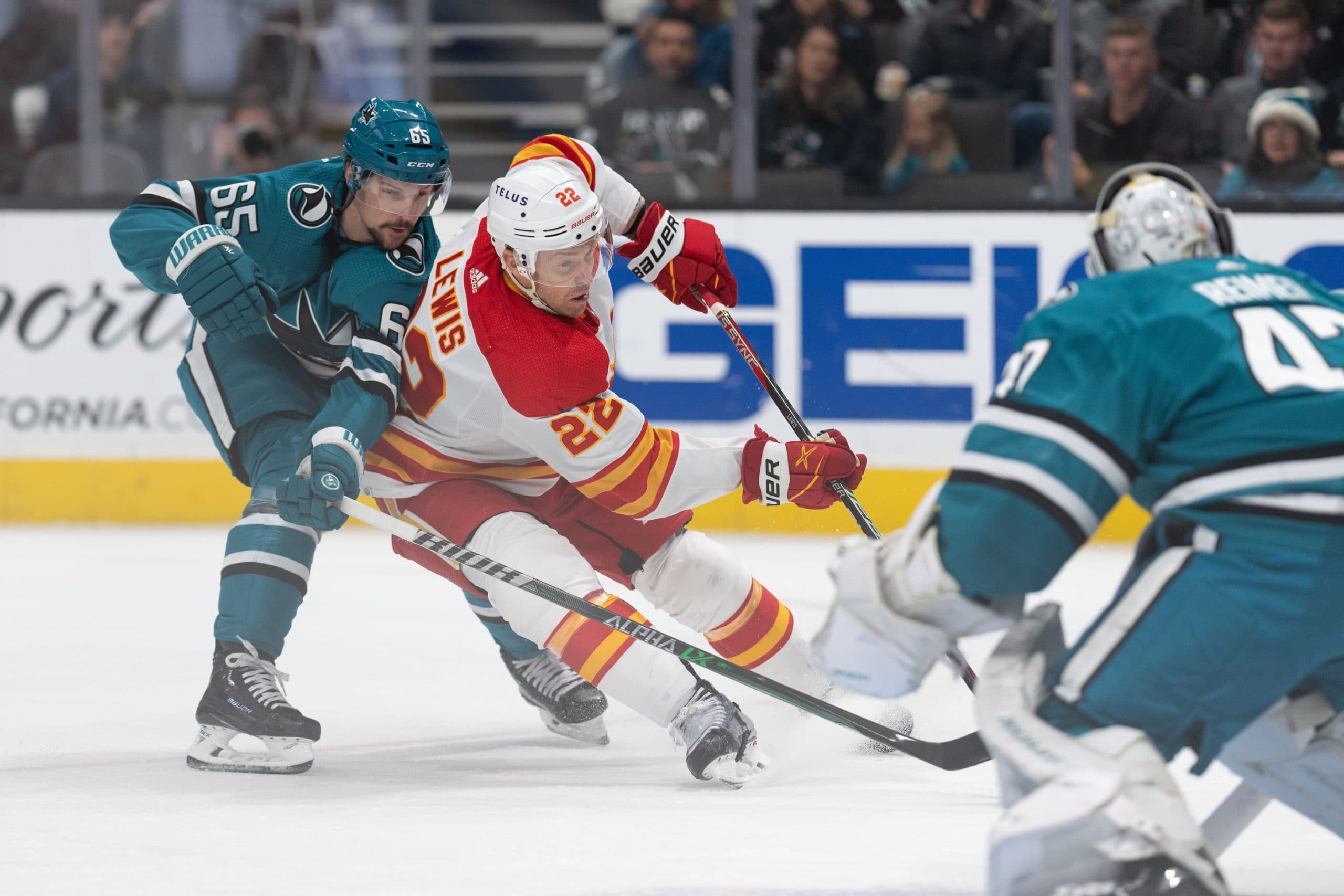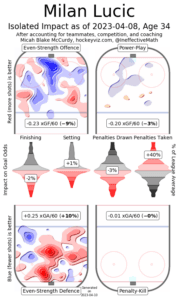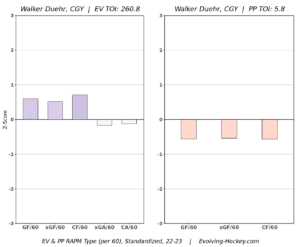Flames goal! Walker Duehr scores his 7th goal of the season! Massive goal for the Flames. 2-1 Calgary
Nation Sites
The Nation Network
FlamesNation has no direct affiliation to the Calgary Flames, Calgary Sports and Entertainment, NHL, or NHLPA
The Calgary Flames’ fourth line is doing its job well enough

Photo credit: Stan Szeto-USA TODAY Sports
Apr 10, 2023, 18:00 EDTUpdated: Apr 11, 2023, 04:00 EDT
The concept of making lines for an NHL roster is full of nuances. Coaches may see the team differently than fans do, as those who sit in the seats don’t get to see how the players behave on a day-to-day basis, both in the locker room and on the ice during practice. However, even without that access, it’s easy to see when players do or don’t have enough chemistry to make things work.
Head coach Darryl Sutter has been insistent on playing veterans with a more physical side to their game, like Nick Ritchie, Milan Lucic and Trevor Lewis, over young guys primarily focused on speed and skill like Jakob Pelletier and even Matt Coronato. It’s evident that fans aren’t happy with these decisions, but the good news is that, even though the lines may not be what some want them to be, the fourth line has done its job to a reasonable level of effectiveness.
The three individuals on the line all have different effects on the Flames’ lineup. Lucic has the worst impact of the three. He’s last on the team in both goals above replacement (GAR) and expected goals above replacement (xGAR), and despite his physical presence, there isn’t much he does with or without the puck that makes him a valuable asset to the bottom six.

Not only are Lucic’s impacts in all three zones an issue, but he doesn’t draw many penalties while taking an excessive amount, so he’s hurting the team that way too. He’s easily the least effective player of the three and getting paid as much as he is; the consensus is that there’s no reason for him to come back next year, even if the line he plays on is still performing at a decent rate.
The next player is Lewis, who by all accounts is still costing the Flames value by GAR and xGAR–he’s 16th in both categories out of 17 skaters with a minimum of 400 total minutes–but plays some above-average defence at even strength.

The defence isn’t bad, which is a plus, but the offensive impact is so below average that it brings Lewis’ overall value into the negatives. So, while he’s a black hole in one zone, he can still be useful at certain times.
The line’s final (and, to many, most fun) member, Walker Duehr, is the player that has done as good of a job as one can to fill the offensive gap on that line.

Not only is he generating in the goals for per 60 category (GF/60), but his expected goals for per 60 (xGF/60) are above average, meaning that Duehr isn’t just getting lucky; he’s generating legitimate chances.
Duehr is such a hard-working forward, and it has appeared to grow on the fans that watch him night in and night out. Not only has he scored 7 goals and 4 assists for 11 points in the 26 games he’s drawn into the lineup, but he uses the physical side of his game to take players off the puck and generate turnovers. Fortunately, he also doesn’t go too overboard. There aren’t many times when he makes a hit and ends up out of position because of it.
The line itself is operating at just over 53% in expected goals for percentage (xGF%), and they have the fifth-highest GF/60 among the qualified lines (minimum 75 minutes played at 5v5) at 3.43. Below is a goal that perfectly exemplifies the kind of stuff this line brings to the table.
Both Lewis and Duehr go to the front of the net after Lucic gets the puck to the point. Duehr takes advantage of the loose puck, wraps it around, and gets a fortunate bounce to give Calgary the lead.
This fourth line feels like the essence of the head coach: two veteran players who rely on their physicality and one younger player who forced his way into the lineup by virtue of scoring and energy that also has a physical play style. And thankfully, they’ve been an effective line over this solid Flames stretch. Even though fans may not like Lucic (for good reason) and even Lewis, there is reason for Sutter to ice this line until the season ends.
Recent articles from Jeff Middleton
- Dan Vladar helped the Flames to a huge victory over the Avalanche, ‘owes Sharky a dinner’ for shootout winner
- Flames and captain Mikael Backlund focused on Avalanche following “frustrating” overtime loss to Oilers
- Huska says Flames were just ‘okay’ in OT loss to Oilers, need to pick up their overall pace
Breaking News
- FlamesNation Mailbag: Waiting for Santa with reader questions
- Flames injury news: positive signs for Martin Pospisil
- Recap: Martin Frk leads Wranglers to memorable Winter Wranglerfest win in more ways than one
- Scotia Place: a street-level look at December construction progress
- Beyond the Boxscore: Flames come out swinging in big 6-3 win over Golden Knights
